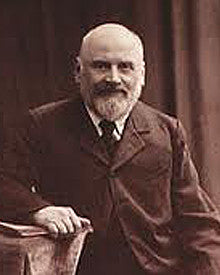
(1837 - 1910)
Mily (or Mili) Alekseyevich Balakirev was the leader of a group of Russian composers called "The Mighty Five" who expressed the importance of having a nationalist school of Russian music. He was a concert pianist and became concert conductor of the Free School of Music in 1862. Balakirev received early music lessons from his mother and later studied with Alexander Dubuque and Karl Eisrich. At 15 he began composing and continued to do so while pursuing mathematics at the University of Kazan from 1853 to 1855. He began performing as a concert pianist by the end of 1855 and took under his wing four young composers starting off with César Cui and Modest Mussorgsky, then Aleksandr Borodin and Nikolay Rimsky-Korsakov later on. The five of them eventually formed what is known as "The Mighty Five" or "The Russian Five." Among his known works are: the music to "King Lear," "Islamey," "Tamara" (symphonic poem), "Piano Sonata," Symphony No. 2," "Overture on Russian Themes" and "Second Overture on Russian Themes."
Mily Balakirev Composition Timpani and Percussion Requirements
King Lear
Timpani + 4 percussion
Triangle, snare drum, clash cymbals, orchestral bass drum, tam tam
__________________________________________________________________________________
Piano Concerto No 2
Timpani + 3 percussion
Clash cymbals, tam tam, triangle
__________________________________________________________________________________
Russia
Timpani + 2 percussion
Triangle, clash cymbals, tam tam, orchestral bass drum
__________________________________________________________________________________
Symphony No.1
Timpani + 4 percussion
Triangle, tambourine, clash cymbals, orchestral bass drum, snare drum
__________________________________________________________________________________
Symphony No.2
Timpani + 4 percussion
Orchestral bass drum, clash cymbals, snare drum, tambourine, triangle
__________________________________________________________________________________
Tamara
Timpani + 6 percussion
1) snare drum, 2) clah cymbals, suspended cymbal, 3) tambourine, 4) orchestral bass drum, 5) triangle, 6) tam tam
__________________________________________________________________________________
